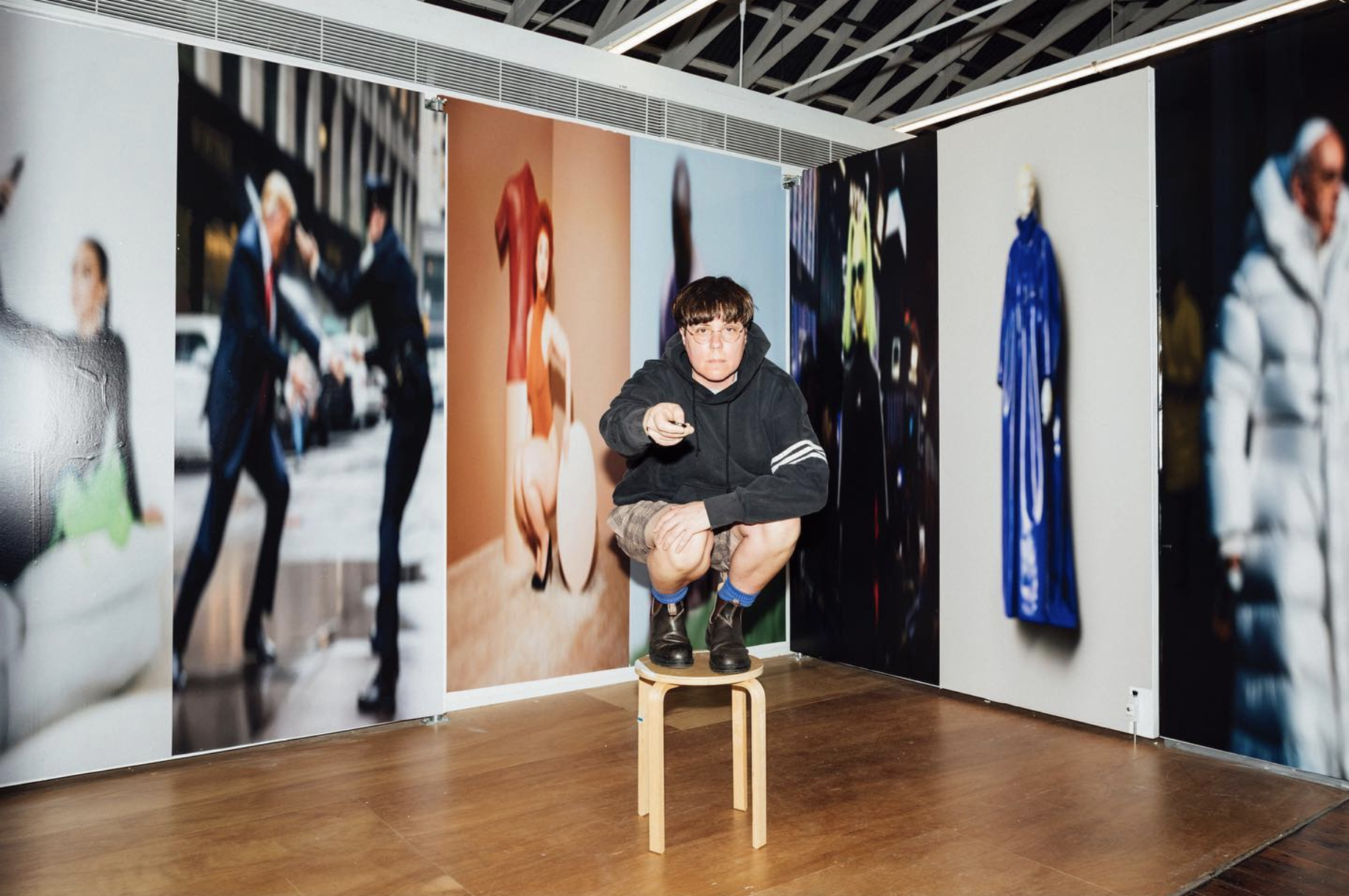Lauren Dunn on Photography and Social Commentary

Lauren Dunn is a multidisciplinary artist who uses photography to navigate social issues. Influenced by her upbringing in an environment filled with fashion magazines, sculptures and film, Dunn has developed her own visual language, “[unpacking] and [decoding] images to make sense of our culture and the power structures that shape our desires.” to Be sat down with Dunn to discuss her background in photography and what she hopes to see improved in the arts for generations to come.
Annabel Blue: Let’s start from the start. Can you tell me about what led you to pick up the camera?
Lauren Dunn: That’s so tough to pin down. I recently did another interview where they asked what first drew me to art – I’m still trying to work it out. Thinking specifically about the camera, what comes to mind is an early memory of looking intensely at printed images. My mother worked in the fashion industry during the ’80s and ’90s, and she’d buy loads of local and international fashion ‘mags’. There were piles and piles of mags all around our home, perfectly stacked like sculptures and ornaments. As a child, I’d spend hours sitting on the floor, flicking through the pages and studying the images. The silky texture and glossy surface of the pages would pull me deep into the images. My works are mostly found images that I manipulate and construct in the studio. The research leading up to this as well as the process of constructing the image can take months; actually capturing the work on camera usually takes only 10–20 minutes.
AB: Talk me through your works
LD: Luxury item no.13 is from a series I created titled ‘New Romanticism’. I was thinking a lot at the time about how images of plants and animals created by large corporations for the purpose of the sale of food are disconnected from the reality of their lifecycle. There’s a lot that happens to our food that we don’t see. The title is not a reference to art history but rather my own ideas around the contemporary culture of romancing food through popular imagery. The work is Shutterstock images made into sculptures and then rephotographed in my lighting studio. Enlarging the image of the oyster was a given; the luscious anatomy has to lure the viewer in, repulse, seduce and perhaps arouse. I’ve threaded printed green olives and anchovies onto a toothpick to hint at the idea of a dirty martini and used the rare and pricey purple cauliflower as a way of disrupting the palette and composition. I’m drawing on tropes of commercial photography—familiar visual languages we are all accustomed to but not necessarily conscious of. The work looks to break down these codes, then wrap them all up again in an enticing package to highlight, celebrate and critique our consumption of luxury food items.
AB: I like how you gesture towards power structures in your practice—how do you conceptualise works?
LD: Thanks, I’m pleased this is translating through the work for you. I think a lot about how images influence, persuade, seduce and mislead us. Mainstream popular images are shaping our culture and behaviours more than ever. The first reason is due to advancements in technology and the second is due to our increasing dependence on the virtual world to survive. I work to unpack and decode these images in order to make sense of our culture and the power structures that shape our desires.
AB: What do you want to see changed in the creative industry and why?
LD: Artists get paid for a very small proportion of what they actually do. I often feel it’s expected that I work for free. I’m quick to say something when I feel uncomfortable but the reality is I shouldn’t have to. There is a lot of sacrifice involved in being a successful artist, and this sacrifice is misunderstood. Organisations like NAVA do great work to support and set benchmarks for artists but the culture in most other circumstances is long outdated.
The Institute of Modern Art Presents: Jenn Nkiru - REBIRTH IS NECESSARY
By Rachel Weinberg
Nan Goldin's The ballad of sexual dependency
By Jasmine Penman
Fiona Lee Prepares us for the Unpreparable
By Maree Skene
Der Greif x Quantum Reshaping The Future of Photography
By To Be Team
Making Art Not Love
By Sophie Prince
Iranian artist Shirin Neshat moves between fiction and reality
By Rachel Weinberg